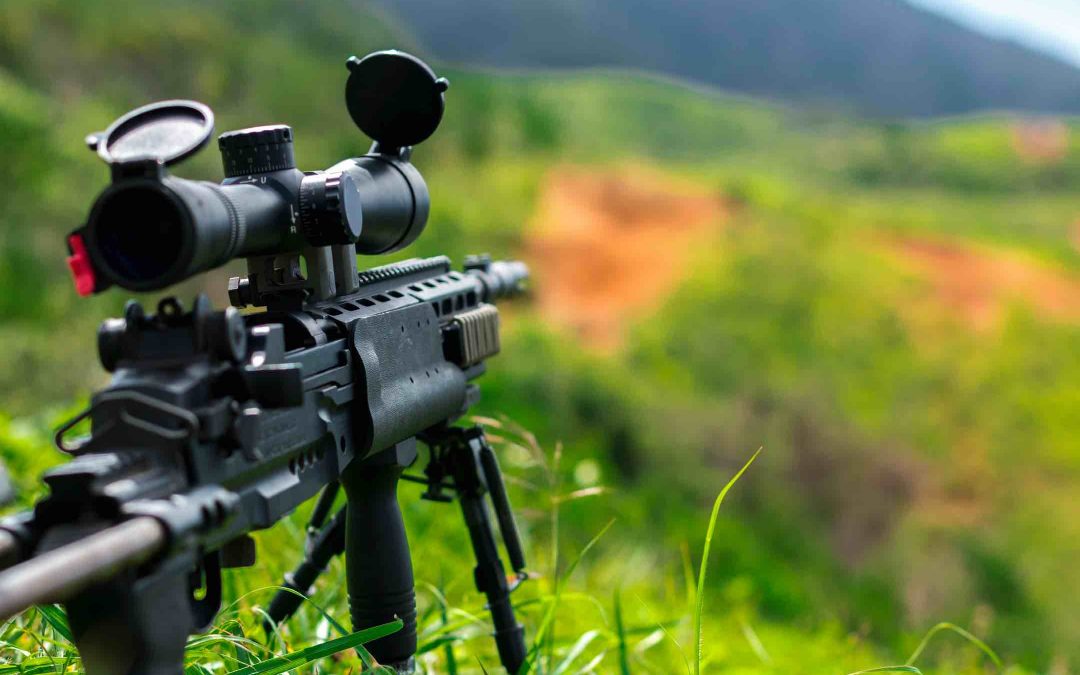At some point in your air gunning journey will probably go from the standard stock sights to telescopic sights. Or you may go down the laser sight route, the choice is yours. Usually the optical scope is more accurate than the laser but it all depends on your air gunning budget. So, you have a scope, the terminology maybe different where you live when you set up the telescopic sites. Read the post for the instructions.
What is zeroing?
It is merely the process of sighting in your air rifle. You want to hit where you are aiming, and airguns don’t come out of the box with perfect aim. Everyone will hold their air rifle differently to the next person, each rifle needs to be set-up for the individual shooter. The process of zeroing is also needed because for the majority of air rifles we cannot manipulate the flight path of the pellet by adjusting the power.
So we need to manipulate the sighting of the air rifle, and this is done by adjusting the aim point of the scope. Through this process, we will make the aim point, and the path of the pellet intersect at a certain distance.
Terminology For Setting Up Telescopic Sights
- Zeroing a Scope
- Zero In Sights
- Calibrating Scopes
- Sighting In
- Sighting
- Set to zero
A guide to airgun terminology.
Steady The Weapon
When you zero a scope you need to cut out as many variables as possible, the first one is to ensure the weapon is as steady as possible for each shot. Ideally use a good bench setup to steady the rifle. Of course do not attempt calibration of the scope in extreme weather conditions as this will probably alter the trajectory of the pellet. Ideally seated, comfortable and no strain to the body at all, you want a relaxed shooting position. If you can get the use of professional shooting rest then use it. The lesser the human interaction during this process is the better the sighting will be.
Pellet Choice For Zeroing the Sights
Again we are looking for consistency and reducing all the variables so the last thing you want to do here is go for a budget pellet. Get a well know brand, a well manufactured pellet that is consistent in weight and size, something like QYS pellets. If the results are inconsistent then you may need to go one step further and try different brands. You then use the airgun pellet that gives the most consistent grouping before any adjustments.
Sighting How far should I be from my target?
It depends on what you want to do with your air rifle. If you are merely planning to plink targets in the garden then go with the regular distance you shoot. For plinking, the average I would say would be around 25 yards from your target. However Start the process at 10 yards to begin with, the maths is easier at this distance and its unlikely that you will mss the target. Trust me, starting the zeroing in process at this distance is a lot easier on the brain cells.
The First Shots For Calibrating The Scope
Before you start ensure that you have an adequate backstop set up, safety in air gunning always comes first. So you are 10 yards away from the target, the conditions are good, the rifle his stable and steady, you are clam. Now you want to be aiming dead centre of the target for every shot, start with 3 in the first instance. If there is any erroneous way out shots then make it 5 shots before measuring the distance from the bulls eye. Remember you want to measure from the centre of the grouping to the centre of the target.
You need to take 2 measurement, the left to right measurement along with the up down measurement. Jot down the numbers and then head back to your air rifle. Now take off the calibration covers and expose the dials.
Zeroing a Air Rifle Scope
There are two adjustments to make: windage (left/right), controlled by the dial on top of the scope, and elevation (up/down), controlled by the dial on the right flank of the scope. Work on one at a time. If you look the at the writing closely on the dial will tell you how much one click will adjust your impact point at 100 yards. In this case, one click moves the impact point 1/4 inch at 100 yards. Time for the maths. If we are zeroing at 10 yards and our impact point in 1 inch high then if we times its by 10 (to simulate the 100 yards) then the shot would 10 inches too high at that range.
So 1 click is a 1/4 of an inch adjustment, 4 clicks is a 1 inch adjust, so for this calculation of 1 inch to high at 10 yards. then we need to do 4 x 10 = 40 clicks. If you were just a 1/4 of an inch too high at 10 yards then the math would be `(0.25 x 10 = 2.5, This is to simulate the 100 yard distance). The next calculation is how many clicks to adjust to 2.5 inches ? The answer is 10, 4 clicks per inch, 4+4= 8 clicks, then for the last 1/2 inch its 2 clicks. 4+4+2=10. Remember you have to make these adjustments fo, up/down, left/right.
The Next Zeroing Shots
Again aim fo the centre of the target, 3 to 5 shots, if you are a beginner at air gunning then I would say a minimum of 5 pellets. Hopefully if you got the math correct and you did not interfere with the weapon too much when firing the second lot of pellets should be a lot closer to dead centre of the target. Measure and repeat the process again if needs be, until the grouping is all dead centre of the target.
Extending The Range To Zero The Sights
Now in theory now you have done the initial calibration of the sights at 10 yards the next distance should be a lot closer to dead centre impact. If you go fo the average plinking 25 yards distance, then remember when you do the calculations you have to times by 4. Thats because 4 times 25 equals 100, so a 1/4 inch too high at 25 yards would be 1 inch high at 100 yards. That is 4 clicks on the scope to adjust. You can now adjust the scope to any distances once you understand the math and how the calibration works on the scope.
If you use the same target for different distances too zero in then a top tip is use coloured marker pens. Colour each batch of pellets in a different colour so you know what shots are what. First batch fluorescent green, second burst, orange. Always stick to the same colours on the 1st, 2nd, 3rd batch and you will know instinctively over time which is which.
What If You Want To Do The Sighting Without Math
This method is not entirely sure accurate for setting up the sights but if you can’t wait to start shooting pellets as soon as possible then this is the method for setting up your scope.
- Setup up the gun securely on a bench
- Fire at the target 3 times
- Adjustments, Leave your gun pointed where it was with the cross-hair on the bulls eye. First, you are going to adjust your windage (horizontal) knob and put your cross-hair left, or right so it’s in line with your actual first shot. Then you adjust your elevation (vertical) knob accordingly and place the cross-hair directly on your first shot. So, the gun never moved, just your cross-hair did.
- Second Shots, Now that your scope is zeroed in on your first actual shot, aim the gun back to bulls eye and put your cross-hair on bulls eye. Fire one shot. You should be pretty darn close. Fire a few more shots just to be sure. Success! Now, we can move the target back. Repeat the process until you get to your required. distance.
How Often Do You Need To Zero The Sights
If you leave the sights on the air rifle, treat your gun well and use the same pellets all the time. Then you should be able to shoot with confidence and accuracy for a long time. However some reasons that you may have to zero the sights in again.
- You have removed the sights from the stock
- Drop the air rifle
- Change the type of pellet you shoot with (this won’t always be the case)
- A large change in shooting distance
- Someone else has used your air rifle

